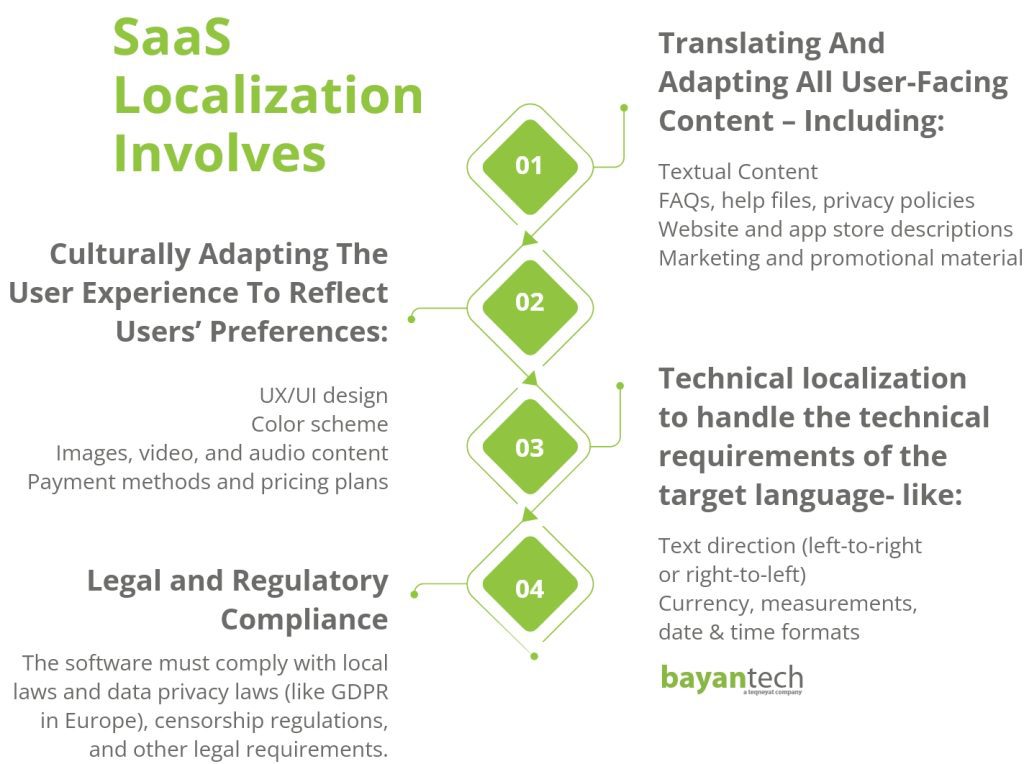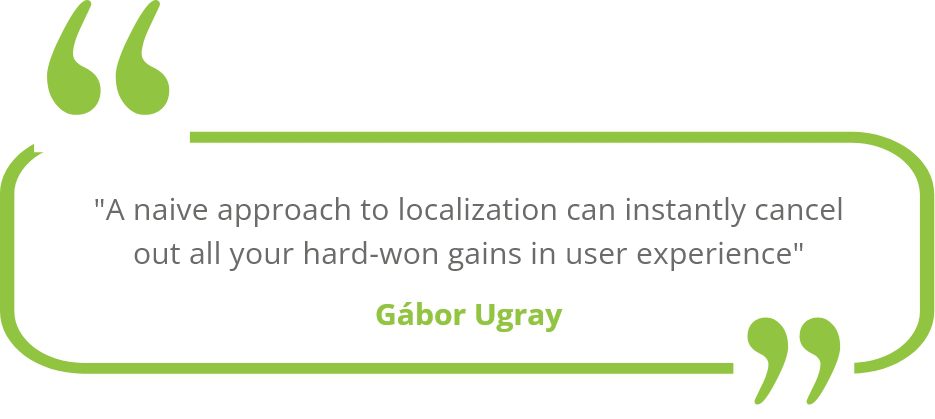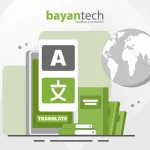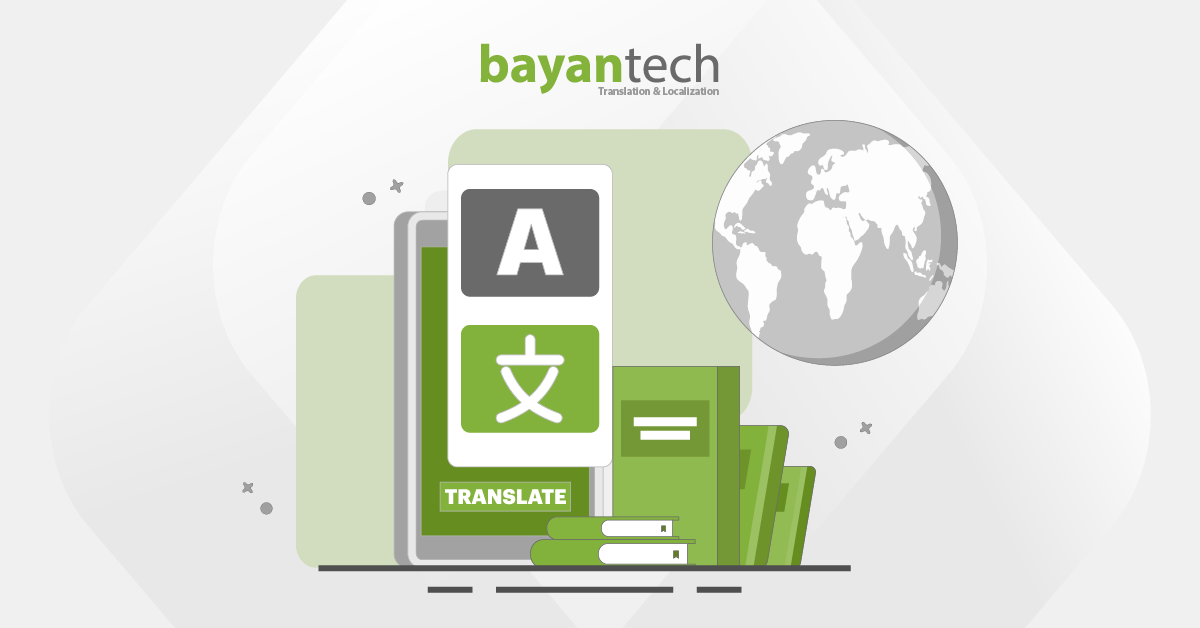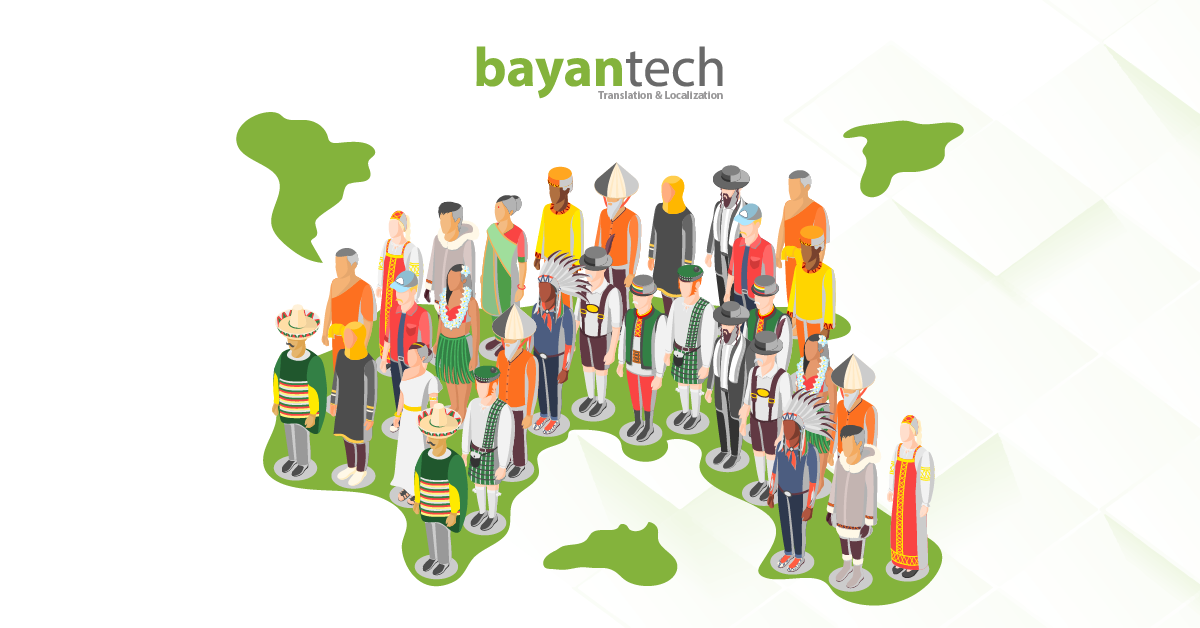“Amazon didn’t really localize its product enough”
Said Ker Zheng, a marketing specialist, as he explained why the eCommerce giant, Amazon, struggled to compete with its established rival, Alibaba, in the Chinese market.
One thing Amazon mistakenly overlooked is how consumers’ behavior and habits can significantly differ from one region to another. And it paid the price as it failed to gain a foothold in China.
This is just one example of how localization mistakes could halt all your efforts and cause you to miss huge opportunities when entering a foreign market for the first time. And in SaaS localization, so many things could go wrong, on the front and back ends.
If you want to learn how you can strategically and effectively engage a very diverse audience base with your SaaS product, this blog post is for you. Join us as we break down 5 pricy SaaS localization pitfalls and how to avoid them.
Understanding What SaaS Localization Is All About
First, let’s explore in depth what SaaS localization means and why it’s so important for users and businesses alike.
What is SaaS Localization?
It means adapting SaaS products to make them look and feel as if they were originally designed for a specific target locale – in their first language. As such, localization considers every aspect that shapes the user experience – from optimizing textual elements to customizing software design and marketing strategy.
Why Does SaaS Localization Matter?
At its core, SaaS localization focuses on crafting a user-friendly experience that provides:
- Accessibility: Removing cultural barriers and offering an inclusive experience in the user’s local language.
- Functionality: Delivering a convenient service that enables users to achieve their intended goals using the software.
- Usability: Creating an intuitive design that is easy to navigate with no friction or difficulties.
When done right, localization allows your SaaS product to resonate with users worldwide. By speaking their language both literally and culturally, understanding their unique needs, and tailoring your product to cater to them, you maximize the appeal of your product within the target market and achieve the success you dream of.
However, localization isn’t just about serving users – it’s a strategic move for businesses that unlocks several advantages:
- Wider Reach: By expanding your access to new foreign markets and allowing you to connect with more users in their native language.
- Competitive Edge: Being the business that speaks the customer’s language and reflects their culture can set you apart in a crowded marketplace.
- Customer Trust and Retention: Showing your efforts to serve a specific audience builds trust with local users leading to loyalty. And loyal customers are more likely to stick with your service longer and recommend it to others.
5 SaaS Localization Mistakes That Will Slow You Down (& How to Avoid Them)
Software localization is a time-intensive, resource-heavy process. To ensure your investment is well-spent, you should be aware of common localization pitfalls that could undermine your efforts. So, here are five mistakes to steer away from.
1. Mistaking Localization for Translation
It’s easy to assume that translation is the same as localization. But these two approaches differ greatly when shaping user experiences.
Translation provides a surface-level linguistic conversion of text without paying much attention to the cultural context. On the flip side, localization is more comprehensive and considers cultural preferences, local norms, and every factor that shapes users’ interaction at each touchpoint.
Relying on translation alone can make the product feel foreign, unwelcoming, and difficult to use. When variables like dates, measurements, and currency are not tailored to users’ preferences, it negatively impacts usability by creating a confusing or frustrating experience.
Therefore, effective SaaS localization requires going beyond word-for-word translation. You must customize the product for each local market, making sure it’s driving the level of engagement that converts users and meets local needs.
2. Not Understanding Your Target Market
Culture significantly influences user expectations – from language and design aesthetics to communication styles and privacy preferences. When your market research does not successfully capture these subtle differences, you might fail to connect with potential customers.
For example, a study found that German users desire clear and precise content with straightforward messages. Meanwhile, Japanese users value a high-context communication style and thorough descriptions.
Furthermore, Asian and South American cultures favor navigation that dynamically changes the appearance of the page, while North Americans and Europeans expect navigation to smoothly guide them through page content for improved usability.
Overlooking these cultural differences means you may struggle to:
- Build an experience that truly feels comfortable to end-users
- Differentiate yourself in competitive markets by addressing specific local needs
- Adhere to national regulations and privacy practices in each market
3. Not Preparing for Layout Issues (Lack of Internationalization)
Without initial preparation aimed at building localization-friendly software from the start, you risk facing numerous visual and technical challenges down the road. The most common of these issues include:
- User interface text overflowing and disrupting the layout due to text length expanding from one language to another leading to misaligned or improperly formatted elements
- Text getting truncated or cut off entirely due to insufficient space for translated content
- Dates, currencies, and other regional variables displayed inaccurately
To avoid this, you should invest in internationalizing your product first. Internationalization refers to the process of developing a neutral product that is easy to adapt to different languages without heavy engineering changes.
This means using flexible layouts that can easily accommodate expansive languages and various text directions making sure the UI supports different date/number formats based on locale
4. Embedding Text Directly into Source Codes
Hardcoding strings, by embedding text directly into your software’s source code, makes the adaptation process inefficient and slow. This is because hardcoded text can’t be easily extracted using using standard translation tools.
As a result, translators would have to manually extract each embedded text and recreate files from scratch, which is time-consuming and expensive. And as the volume of translatable strings increases, the required time and resources will lead to significant additional costs.
For this reason, one of the software localization best practices is to store all strings that need adaptation in resource files or databases separate from code. This way, it’s easier to manage and update content without altering the source code lowering the possibility of errors.
5. Overlooking Continuous Localization
Approaching SaaS localization as a one-time task can weaken your competitiveness over time — for many reasons.
First, as languages and technology naturally evolve, failing to adapt to these changes leads to outdated translations, irrelevant content, and frustration for users. What’s more, your software will lack the support for emerging features and trends in the target locale.
And without continuous updates, your product wouldn’t meet users’ everchanging demands which leads to user dissatisfaction. In contrast, competitors who regularly update and refine the user experience will seem more relevant and resonant with local users.
This is why it’s essential to establish a system for ongoing SaaS localization to keep your software up to date and in tune with market trends.
You should perform frequent updates on the back end and front end to ensure compatibility with new devices and relevance of content. You might also use customer feedback to gain a better insight into their pain points and needs and enhance user experiences accordingly.
Approach Software Localization Like a Pro with This Simple Checklist
This simple, yet comprehensive, guide covers the most crucial practices for organized and seamless localization.
How to Build an Effective & Cost-Efficient SaaS Localization Strategy in 3 Steps
While the software localization process might seem daunting, having a well-thought-out approach makes a big difference. Here are 3 key tips to help you out.
1. Optimize Workflows for Scalability & Agility
Successful SaaS localization lies in your ability to serve several multilingual markets efficiently and effectively. And that’s why faster time to market and responsiveness to changes are key players in your success.
Adopting a scalable and streamlined localization workflow will make it easier to balance quality with speed and allow you to integrate regular updates more easily and at scale.
So, how can you optimize your SaaS localization workflow?
- Plan and Prioritize: Start by carefully planning your localization efforts. And prioritize the markets with the highest impact. It’s better to focus on each locale rather than splitting your efforts across several markets at the same time.
- Integrate Localization Early: If possible, make localization part of your software development cycle by using internationalization best practices and designing localization-friendly products.
- Use Localization Tools: Use translation management systems to automate manual processes like string extraction, translation management, and content deployment. These tools make centralizing large volumes of content manageable and efficient.
- Develop style guides and glossaries: Create comprehensive style guides to maintain consistent terminology and branding across all localized content, ensuring a cohesive user experience. Also, share these references with your localization team and provide regular updates as your product evolves.
Lastly, working with on-ground experts gives you great access to all the advanced tools and the infrastructure needed to scale localization without massive in-house investment. And that brings us to the next point!
2. Collaborate With Industry Experts
Partnering with software localization services provides several advantages, including streamlined workflows and tools that seamlessly integrate into your existing production processes.
In addition, it gives you access to a large team of language professionals who possess a deep understanding of the target language, your audience’s cultural context, and subject matter expertise.
What’s more, professional translation companies also offer valuable insights and strategic perspectives, based on their experience working with various clients and industries. These insights can help optimize your strategy for efficiency and cost-effectiveness.
3. Test, Monitor, and Improve
Localization testing is a critical step in the software localization cycle to ensure your software meets all linguistic and technical requirements before launch. This involves performing:
- Language testing to verify the accuracy, fluency, and appropriateness of the translated content, ensuring it is linguistically correct and culturally relevant.
- Technical testing to address any technical bugs in the user interface and experience, confirming all buttons, menus, and formats are functional and error-free.
- Compatibility testing to confirm the product’s compatibility with local internet speeds, devices, and operating systems, as well as compliance with security standards and national regulations.
Furthermore, even after localization completion, you should regularly analyze your software’s performance and adapt to changing market dynamics. You can monitor user feedback, engagement metrics, and conversion rates to identify areas for improvement.
Your Localization Testing Cheat Sheet!
Learn everything about testing your localized software and website in this handy guide.
Taking Your Software Global? Let bayantech Guide You to Strategic Success!
SaaS product localization is a multi-stage process that requires expert oversight and continuous testing, and that’s exactly why you need the assistance of localization professionals deeply familiar with the linguistic and regional nuances of your target market.
For over two decades, bayantech’s professional translation services have expertly guided SaaS companies to successful localization at all scales, crafting experiences that engage and satisfy audiences worldwide.
Our selective team of in-country translators and localization experts are not only native to your target language but also immersed in the culture of your target locale. We deliver our services in +120 languages with 24/7 support.
Ready to embark on this journey with us? Request a free quote now!
If you need to learn more, contact us today and speak with one of our localization experts to discuss your needs.
8 Steps Every Medical Interpreter Takes
Looking for a medical interpreter? Discover the career path of medical interpreters and qualifications they need to acquire to take on interpreting jobs.


